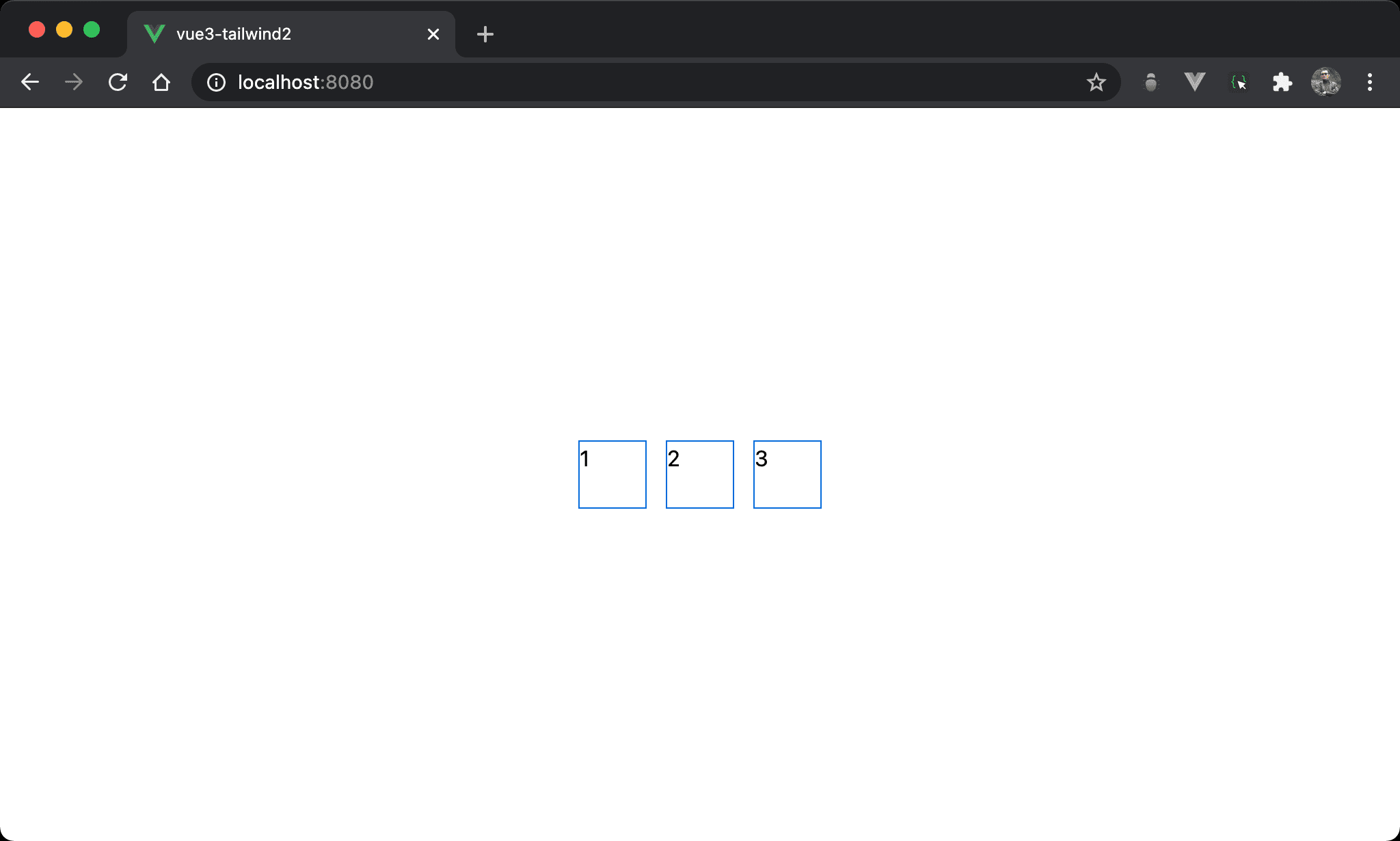若要同時水平置中與垂直置中,直覺會同時使用 justify-center 與 aligns-center,事實上也可巧妙地使用 margin: auto 實現。
Version
Tailwind CSS 2.0.3
m-auto

Item 在 box 內同時水平垂直置中。
<template>
<div class="flex h-screen">
<div class="w-12 h-12 my-auto ml-auto mr-2">1</div>
<div class="w-12 h-12 my-auto mx-2">2</div>
<div class="w-12 h-12 my-auto ml-2 mr-auto">3</div>
</div>
</template>
flex:使用 Flexboxh-screen:設定 box 的 height 為100vhw-12:設定 item 的 widthh-12:設定 item 的 widthmy-auto:設定 item 的 vertical margin 為automl-auto:設定 item 的 left margin 為automr-auto:設定 item 的 right margin 為automr-2:設定 item 的 right marginml-2:設定 item 的 left marginmx-2:設定 item 的 horizontal margin
因為 Flexbox 的
<div>width 已經佔據一列,且h-screen也設定 height,因此可藉由my-auto垂直置中,與ml-auto和mr-auto水平置中
<template>
<div class="flex h-screen">
<div class="item ml-auto mr-2">1</div>
<div class="item mx-2">2</div>
<div class="item ml-2 mr-auto">3</div>
</div>
</template>
<style scoped>
.item {
@apply w-12 h-12 my-auto
}
</style>
10 行
.item {
@apply w-12 h-12 my-auto
}
若覺得各 item 所使用的 utility 都相同,可使用 @apply 抽出 item class。
Conclusion
- 之所以能夠使用
my-auto實現items-center,主要原因是flex下的 box 已經設定 height 為h-screen,因此對於 item 而言有上下 margin,才可使用my-auto垂直置中,但一般 box 沒有 height 而是由 item 撐開,此時並沒有上下 margin 可言,因此m-auto也無濟於事